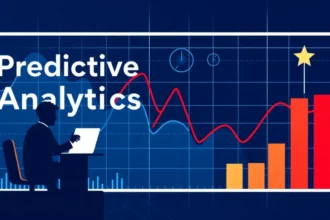Launching a website for your business takes a lot of time, money, and effort. And if you’re going to put forth all of these resources, you better be sure you’re getting some good value in return. But how do you know?
What’s the Purpose of Your Website?
No two websites are the same. Yet if you were to analyze a sample of several hundred to several thousand sites, you’d discover that they almost all share one or more of the following objectives:
- Sales. Many websites are sales-driven in the sense that their primary objective is to convert visitors into dollars. This can happen through direct selling on the website, or by pushing visitors further down a funnel where they can be contacted by a salesperson in some sort of followup scenario.
- Education. Some websites are purely educational. These websites are designed to nurture leads and prepare them to eventually be sold at a later date. Other websites have no agenda – they simply educate as a form of building an audience and then parlay that into advertising dollars and other opportunities.
- Branding. In certain cases, a company’s website is nothing more than a branding play. It fits into a larger strategy that’s focused on building relational equity and recognition with members of the company’s target market.
A website doesn’t have to fit neatly into one of these three buckets. You could have an ecommerce site that’s predominantly focused on sales, but also has a massive library of educational content to support its product offerings. You’ll even find websites that tick off all three of these boxes (sales, education, and branding). But rarely will you find a business website that exists independent of these categories.
As you begin evaluating your website, make sure you get clear on which of these three objectives underscore your strategy. It’ll clarify your approach and allow you to proceed with a more strategic vision.
Simple Ways to Measure and Evaluate Success
It takes a long time for a website to thrive. It’s a labor of love, creativity, and money. However, you can study its growth and progress by analyzing some of these different metrics and signals:
- Goal values. Marcel Digital defines goal values as “rigid monetary amounts assigned to specific, non-ecommerce actions on your website.” In other words, they’re tangible metrics you can use to track the value of website visitors when there’s no direct sale or conversion happening. By setting and tracking the right goal values, you can get a better idea of how well your website is doing with engaging people.
- Bounce rate. According to Google, a visitor bounces when they leave your site by clicking an external link; press the back button on their browser; type another URL into their web browser; close the browser tab or window; or fail to interact with your web page before a session timeout. The lower your bounce rate, the more likely it is that your visitors are engaging, finding value, and ultimately converting.
- Average time. The longer the average time on page (and site), the more likely it is that people are engaging with your content. (Typically a high average time on page coincides with a low bounce rate – though not always.)
- Heat maps. If you’re looking for an advanced, high-tech way to evaluate your website’s effectiveness with your audience, heatmaps and scrollmap reports are powerful. These tools show you precisely where visitors are looking, clicking, and scrolling when they’re on your site. Based on this information, you can make educated decisions on how to optimize your page for higher conversion rates.
- User surveys. Sometimes you just need to ask. User surveys can be great for gathering firsthand information and insights that can then be used to make strategic changes to your web pages.
The first time you dig in and study the numbers, it’ll all feel a little foreign. But as you continue to measure and evaluate the same metrics over a period of months and years, trends will emerge. You can then use this information to iterate and improve.
How’s Your Site Doing?
Trying to compare your website to another company’s site is futile. The success (or failure) of a website is highly dependent on hundreds of unique circumstances. Do your best to understand the circumstances facing your site so that you can optimize accordingly.







